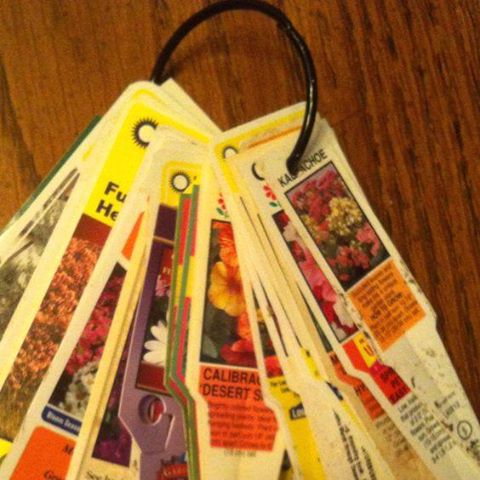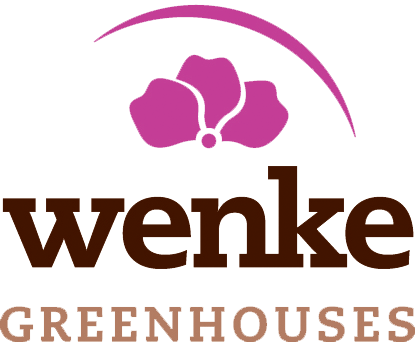 Plant tags are your key to success when choosing and growing plants.
Plant tags are your key to success when choosing and growing plants.
If you don’t understand all the things you see on a label, you’re not alone. Unravel the mystery of plant label lingo – and take the guesswork out of selecting and placing plants in your yard.
Plant labels may be different, but often they contain similar information. Here are some of the common words you’ll see on plant labels – and what they mean to you. When shopping for plants, it is essential to read the tag that comes with it before purchasing. The tag contains all the necessary growing information.
Photo of the plant: The first thing you will see is a beautiful photo of the plant in bloom. It is important to read the description of the plant before buying a plant based on the picture especially if you are looking for a specific bloom color. Occasionally, the bloom color does not exactly match what is in the picture. Tags can get faded or perhaps the printer was running low on a color when the tag was made.
Common Name: This is the name gardeners often use to refer to plants. Common names are usually easier to remember than the scientific name but common names can be misleading as they can vary in different areas of the country and indeed the World. For example, in the USA, Hibiscus syriacus is often called by the common name “Rose of Sharon”, but in the UK, “Rose of Sharon” refers to the genus Hypericum, which is a a totally different plant and family.
Scientific Name: This is the name growers and other horticultural professionals use to define specific plants. Every plant has a scientific name. The first part is Latin and usually italicized on the tag. It describes the genus, or group, the plant belongs to and its species. The scientific name also includes the cultivar and classifies the plant even further in terms of color and leaf and petal shape.
Annual: Annuals are plants that grow only one season. They will not survive our winters here in Michigan. Examples are Petunias, Impatiens, and Marigolds.
Perennial: Perennials are plants that come back year after year. Some examples are Hostas, Coneflowers, and Daylilies. Please be aware that some plant companies make a universal tag that goes with the plant. Yes, it may be a perennial somewhere in the country according to them but maybe not in your zone. Unfortunately, we have no control over this kind of tag, so always make sure to check the zone of the plant you intend to buy. Some perennials could be considered annuals in our zone.
Biennial: Biennials are plants that grow foliage the first year, flower the second year and then die away after the second year. Biennials ten to reseed themselves in the garden, but not always in the same spot they were originally located. Examples of some biennials are Foxgloves and Hollyhocks.
Exposure or Light: This details what kind of sunlight the plant needs to thrive. This part of the label can be confusing. Here’s the lowdown on light needs:
- Deep or Dense Shade, Full Shade: Look for this on the north sides of buildings and walls or under trees with low branches and dense leaves. Less than 3 hours of direct sunlight each day, with filtered sunlight during the rest of the day. Full shade does not mean any sun. There aren’t many plants that can survive in the dark.
- Partial Shade: Find this in areas that get direct morning sun (on the east side of buildings) or afternoon sun (on the west side of structures) but none at midday, from about 10:00 am to 2:00 pm. Less than 3 hours of sun.
- Light Shade, Dappled Shade: Look for this under trees with high branches or sparse foliage.
- Part Sun: Same as partial shade – except plants that like part sun also tolerate midday sun. Approximately 3 to 6 hours of sun.
- Full Sun: These places receive direct sunlight for at least 6 hours or more each day, including some or all of the midday hours.
Bloom time: This will tell you when you can expect the plant to bloom. Sometimes the description might be general and just say spring or summer while other times it may list the month such as June, July. Keep in mind that while perennials come back year after year, there are many that do not bloom all summer long.
Size: This is the maximum size the plant achieves in ideal growing conditions. The height and width are the estimated size that the mature plant will become. Growth may take many seasons if it is a perennial or only one season if it is an annual. This information helps you decide if the plant will fit in your intended spot and helps you provide enough space for the plant to grow to full maturity.
Spacing: Spacing tells how many inches or feet the plant needs between another of the same kind of plant. If plants are planted too closely together, they can hinder each other from growing.
Habit: Habit indicates the shape of the plant. Some plants grow straight up, others are mounding and some trail along the ground.
Care: This section of the label gives important clues about how to keep the plant looking its best. It may suggest pruning, deadheading (removing spent blooms) or following a specific fertilizer program.
Watering Requirements: Water requirements vary by plant. Follow the instructions carefully to keep from under- or overwatering. Some plants are very thirsty and like “wet feet” while others like to very parched before the next watering.
Use: A great way to discover how to use the plant to brighten your yard. It might say the plant is perfect for containers, a good choice for beds or a wonderful addition to back-of-the-border plantings.
Attributes or Features: The label may state or have symbols that share additional details about the plant. A deer head or outline of a rabbit means the plant is deer- or rabbit-resistant. Or it may state that the plant produces great cut flowers or that it’s a non-stop bloomer. All great information!
What to do with tag after planting?? Keep it! These tags can be a valuable reference over many seasons as the plants grow and bloom. Save, date, and store the tags somewhere handy. I keep all of mine!


